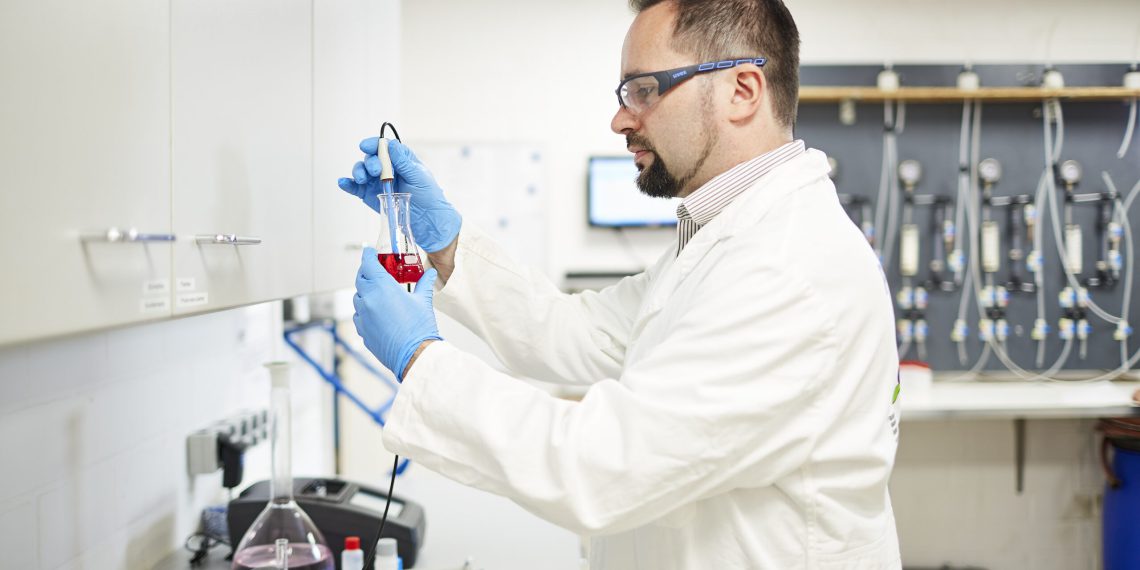For some time now, there have been challenges with the quality of the groundwater in a waterworks in the town of Mechernich, Nordeifel. In particular, lead is a major problem that is found in the groundwater. For this reason, the use of granulated iron hydroxide, GEH 102, for the elimination of lead from drinking water has been tested since summer 2021. While previous trials with other approaches showed only limited effectiveness in removing lead, the iron hydroxide 102 from GEH Wasserchemie was fully convincing. Thus, the high lead concentration of 100 μg/L in the raw water could be safely removed to below the limit of determination.
“Lead in drinking water” — This already very old topic is usually associated with old lead piping in domestic installations. Lead pipes have not been allowed to be used since as early as the 1970s. In recent decades, the pipes have therefore been replaced by other materials in the renovation of old buildings. At the same time, the limit value for lead in drinking water was lowered in several stages and has been at a value of 10 μg/L since 2013.
However, lead does not only occur through lead piping. It can also occur in natural groundwater. The reason for this is naturally occurring rock layers containing lead. For affected water utilities, which rely on clean raw water in drinking water production, lead removal is a challenge. If they cannot reliably remove the lead on a permanent basis, the groundwater cannot be used for drinking water supplies.
Lead removal is usually achieved by chemically deacidifying the raw water: this involves passing the water over calcium carbonate granules or dolomitic filter material to bind the free carbonic acid. At higher pH values, the dissolved lead precipitates as insoluble lead hydroxide or lead carbonate and is filtered off. Although this process has proven successful in the past, it has its limitations when very low lead concentrations are to be achieved and the pH value cannot be raised too much. In this case, it is a good idea to specifically remove the lead with a different approach in the form of using an iron hydroxide adsorber.
Since July 2021, granulated iron hydroxide under the brand name GEH® 102 of the company GEH Wasserchemie has been used for this purpose in a waterworks of the city of Mechernich (North Eifel) in supply-effective operation. Within the framework of the so-called Extended Effectiveness Test (EWP), which takes place under the auspices of the Federal Environment Agency, the effective lead removal is proven and evaluated by an expert.
After 6 months of operation, a first conclusion could be drawn: The GEH has successfully demonstrated its performance and achieved excellent lead retention. Lead was removed to below the analytical determination limit of < 1 μg/L. It should be emphasized that in this first test phase, the adsorber was fed with raw water with a particularly high lead content of 100 μg/L and a pH of 5.7 in order to test its effectiveness under the most unfavorable conditions possible. The second test phase, scheduled for summer 2022, will then test actual operation as a “police filter” after the deacidification stage. It remains to be seen what the results will be in the second test phase. However, it can be assumed that GEH 102 will also be convincing in this case after the successful first test phase.

















